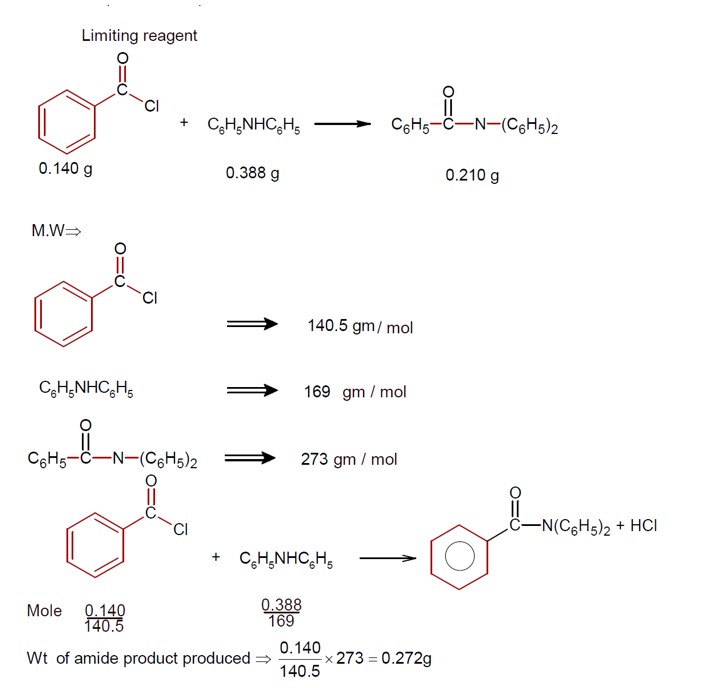Class 12th
Get insights from 12k questions on Class 12th, answered by students, alumni, and experts. You may also ask and answer any question you like about Class 12th
Follow Ask QuestionQuestions
Discussions
Active Users
Followers
New answer posted
2 months agoContributor-Level 10
Using the Ideal Gas Law, PV = nRT:
P = 1 bar
V = 20 mL = 0.020 L
R = 0.083 L·bar·mol? ¹·K? ¹
T = 273 K
n = PV / RT = (1 * 0.020) / (0.0831 * 273) = 8.8 * 10? mol of Cl?
Number of Cl? molecules (N) = n * N_A = (8.8 * 10? ) * (6.022 * 10²³) = 5.3 * 10²? molecules.
Number of Cl atoms = 2 * (5.3 * 10²? ) = 1.06 * 10²¹.
The answer, rounded off to the nearest integer for the power of 10²¹, is 1.
New answer posted
2 months agoContributor-Level 10
For the dissociation of K? [Fe (CN)? ]? 4K? + [Fe (CN)? ]? , the number of ions produced (n) is 5.
The degree of dissociation (α) is related to the van't Hoff factor (i) by α = (i-1)/ (n-1).
Given α = 0.4: 0.4 = (i - 1) / (5 - 1) => 1.6 = I - 1 => I = 2.6
Using the depression in freezing point formula (ΔTf = i·Kf·m), and equating the ΔTf for two different solutions:
ΔTf (K? [Fe (CN)? ]) = ΔTf (A)
i? ·Kf·m? = i? ·Kf·m?
(2.6) * [ (18.1 / M) / (100-18.1)/1000] = (1) * [ (w? /M? ) / (W? /1000)]
The problem simplifies to finding the molar mass M of solute A:
2.6 * [18.1 / (M * 81.9)] * 1000 = [w? /M? ] * [1000/W? ]
Assuming the secon
New answer posted
2 months agoContributor-Level 10
f (x) = (cos (sin x) - cos x) / x? We need lim (x→0) f (x) = 1/k.
Using cos C - cos D = -2 sin (C+D)/2) sin (C-D)/2).
f (x) = -2 sin (sin x + x)/2) sin (sin x - x)/2) / x?
For small x, sin x ≈ x.
lim (x→0) f (x) = lim -2 * ( (sin x + x)/2 ) * ( (sin x - x)/2 ) / x?
Using series expansion: sin x = x - x³/3! + x? /5! - .
sin x + x = 2x - x³/6 + .
sin x - x = -x³/6 + x? /120 - .
f (x) ≈ -2 * ( (2x)/2 ) * ( (-x³/6)/2 ) / x?
≈ -2 * (x) * (-x³/12) / x?
≈ (2x? /12) / x? = 2/12 = 1/6.
So, 1/k = 1/6 ⇒ k = 6.
New question posted
2 months agoNew answer posted
2 months agoContributor-Level 10
The equation of the plane passing through the line of intersection is:
(2x - 7y + 4z - 3) + λ (3x - 5y + 4z + 11) = 0.
The plane passes through the point (-2, 1, 3).
(2 (-2) - 7 (1) + 4 (3) - 3) + λ (3 (-2) - 5 (1) + 4 (3) + 11) = 0
(-4 - 7 + 12 - 3) + λ (-6 - 5 + 12 + 11) = 0
(-2) + λ (12) = 0 ⇒ 12λ = 2 ⇒ λ = 1/6.
Substitute λ back into the equation:
(2x - 7y + 4z - 3) + (1/6) (3x - 5y + 4z + 11) = 0
Multiply by 6:
6 (2x - 7y + 4z - 3) + (3x - 5y + 4z + 11) = 0
12x - 42y + 24z - 18 + 3x - 5y + 4z + 11 = 0
15x - 47y + 28z - 7 = 0.
This is the equation ax + by + cz - 7 = 0.
So, a=15, b=-47, c=28.
We need to find the value of 2a + b
New answer posted
2 months agoContributor-Level 9
R_eq = 10 + (50 * 20) / (50 + 20) = 170/7 Ω
⇒ I = 170 / (170/7) = 7A
⇒ x = 10 * 7 = 70V ⇒ Voltage across 10Ω resistor
Taking an Exam? Selecting a College?
Get authentic answers from experts, students and alumni that you won't find anywhere else
Sign Up on ShikshaOn Shiksha, get access to
- 65k Colleges
- 1.2k Exams
- 679k Reviews
- 1800k Answers


